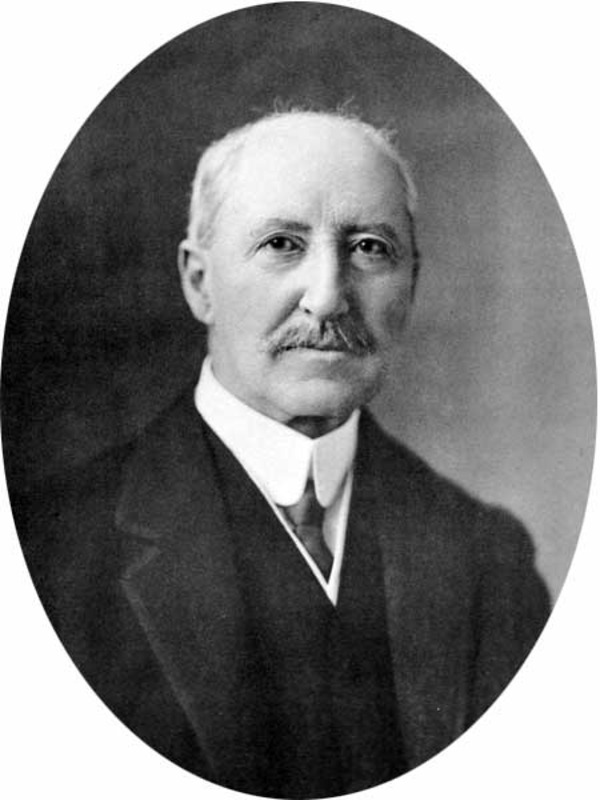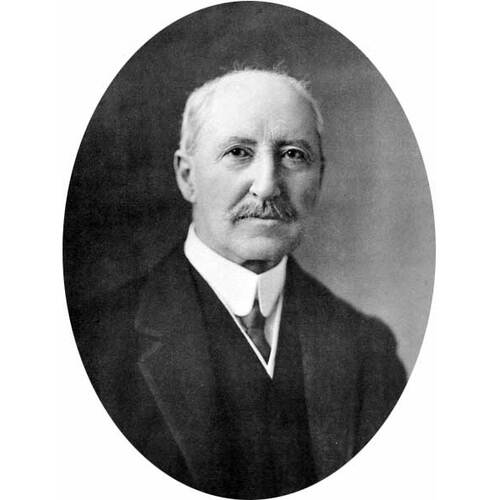
Source: Link
RUTTAN, HENRY NORLANDE, engineer, militia officer, and office holder; b. 21 May 1848 in Cobourg, Upper Canada, son of Henry Jones Ruttan and Margaret Pringle; m. 19 Aug. 1871 Andrina Barberie in Dalhousie, N.B., and they had nine children, of whom four sons and two daughters survived infancy; d. 13 Oct. 1925 in Winnipeg.
Henry Ruttan, the eldest of 10 children, was raised in Cornwall and Cobourg, Upper Canada. His paternal grandfather, Henry Ruttan*, had been a militia officer, politician, and inventor. His father was editor of the Cobourg Star. In his teens Ruttan quickly established the first of the two occupations that would run as threads throughout the rest of his life, joining the Cobourg Volunteer Militia Rifle Company as a private and graduating from the School of Military Instruction in Kingston at age 18. In 1866 he fought with the militia to repel the Fenian raids [see John O’Neill*]; this service would later earn him the Canada General Service Medal.
In 1868 Ruttan began to develop the second aspect of his career when he was hired to work in the engineering department of the Grand Trunk Railway. Within the year, he went to work under Sandford Fleming* as a rodman with the Intercolonial Railway, in charge of the Baie des Chaleurs (N.B./Que.) section. Soon thereafter, he took his discharge from the militia, presumably to concentrate on engineering. In 1874 he transferred to the Canada Pacific Railway (Fleming had been named chief engineer in 1871) and he spent the next two years in charge of a track location party working through the Yellowhead Pass (Alta). In a letter to his wife he describes how he changed by many miles the line of track over the Saskatchewan River from Fleming’s original survey without consulting the chief engineer. His status in the railway company is demonstrated by a certificate from David Laird*, superintendent general of Indian affairs, dated 1 May 1875 and placing him second in authority after Fleming to deal with natives while building the line.
Although he left the employ of the Canada Pacific in 1880 and settled in Winnipeg, Ruttan continued to be involved in railway construction. Around 1882 he established a short-lived contracting firm, Ruttan, Rodgers and Company. Two years later the partnership of civil and mining engineers Ruttan and James Brady announced their interest in railway construction and mining. By 1885, however, Ruttan had formed H. N. Ruttan and Company and Brady was practising on his own. At some point Ruttan also became involved in gold mining at Clearwater Bay (Ont.) as vice-president of the Argyle Mining Company. The first of his lifelong interests had soon re-established itself when in 1883 he became captain of No.2 Company of the 90th (Winnipeg) Battalion of Rifles. In 1885 he fought with his battalion under Major-General Frederick Dobson Middleton* in the North-West rebellion, serving at the battles of Fish Creek and Batoche (Sask.) and in the campaign to capture Big Bear [Mistahimaskwa*]. He returned to Winnipeg and was awarded the North West Canada Medal and clasp.
Ruttan became the first city engineer of Winnipeg in 1885 and remained in office until his retirement in 1914. He soon became known as an efficient and careful engineer. He was keen to improve the city’s water supply, arguing for an expansion of the use of artesian wells. He apparently did not see the benefit of going farther afield for an adequate source of water. Indeed, as late as 1910, he was still recommending the expansion of the system, in spite of the inadequacy of artesian wells as a source of supply. Under considerable criticism, the Winnipeg City Council finally agreed to follow the advice of external experts and use Shoal Lake, near the Manitoba–Ontario boundary, for its water supply. With the creation of the Greater Winnipeg Water District, the building of the Shoal Lake aqueduct began in 1913.
Ruttan was interested in developing increased energy sources from water. The city council was enthusiastic about his plan to develop an electric plant on the Assiniboine River. The plan included a proposal to increase the water supply in the Assiniboine River by digging a canal from the river to Lake Manitoba. This canal would also serve to improve inland water transportation. Although they initially supported the plan, the press, the public, and the business community began to criticize it as too costly, so the project was abandoned.
At his retirement in 1914 Ruttan was honoured by a banquet and a significant gift of silver. He had hoped to go overseas during World War I, but was turned down because of his age, 66. In 1887 he had been promoted major. Two years later he was named general officer commanding Military District No.10. In February 1918 he was temporarily replaced as commander of the district, pending an inquiry into the district’s administration and into charges of misappropriation of funds. By May several senior officers had been retired and two others relieved of duty. Ruttan was completely exonerated of any blame, but the incident may have influenced his decision to retire from the militia that month.
Henry Norlande Ruttan appears to have been a conscientious individual who served well in the posts he held. He was recognized in both the engineering profession and the military, becoming president of the Canadian Society of Civil Engineers in 1910, for example, and being promoted brigadier-general in 1912, but he does not seem to have had a particular vision for western Canada, a vision that would have set him above the rest.
Henry Norlande Ruttan is the author of at least nine engineering reports, all of which are listed in the CIHM, Reg. Several of his articles and one of his addresses can be found in the Science and technology biblio. (Richardson and MacDonald).
AM, MG 14, C52. Manitoba Free Press, 9 June 1914, 26 Feb. 1918. Winnipeg Telegram, 6 May 1918. A. F. J. Artibise, Winnipeg: a social history of urban growth, 1874–1914 (Montreal and London, 1975). George Bryce, A history of Manitoba; its resources and people (Toronto and Montreal, 1906). Canadian men and women of the time (Morgan; 1898). H. N. Ruttan, A part of the family Ruttan, 1590–1986 (Ottawa, 1986). Standard dict. of Canadian biog. (Roberts and Tunnell).
Cite This Article
David R. Dyck, “RUTTAN, HENRY NORLANDE,” in Dictionary of Canadian Biography, vol. 15, University of Toronto/Université Laval, 2003–, accessed April 27, 2025, https://www.biographi.ca/en/bio/ruttan_henry_norlande_15E.html.
The citation above shows the format for footnotes and endnotes according to the Chicago manual of style (16th edition). Information to be used in other citation formats:
| Permalink: | https://www.biographi.ca/en/bio/ruttan_henry_norlande_15E.html |
| Author of Article: | David R. Dyck |
| Title of Article: | RUTTAN, HENRY NORLANDE |
| Publication Name: | Dictionary of Canadian Biography, vol. 15 |
| Publisher: | University of Toronto/Université Laval |
| Year of revision: | 2005 |
| Access Date: | April 27, 2025 |



